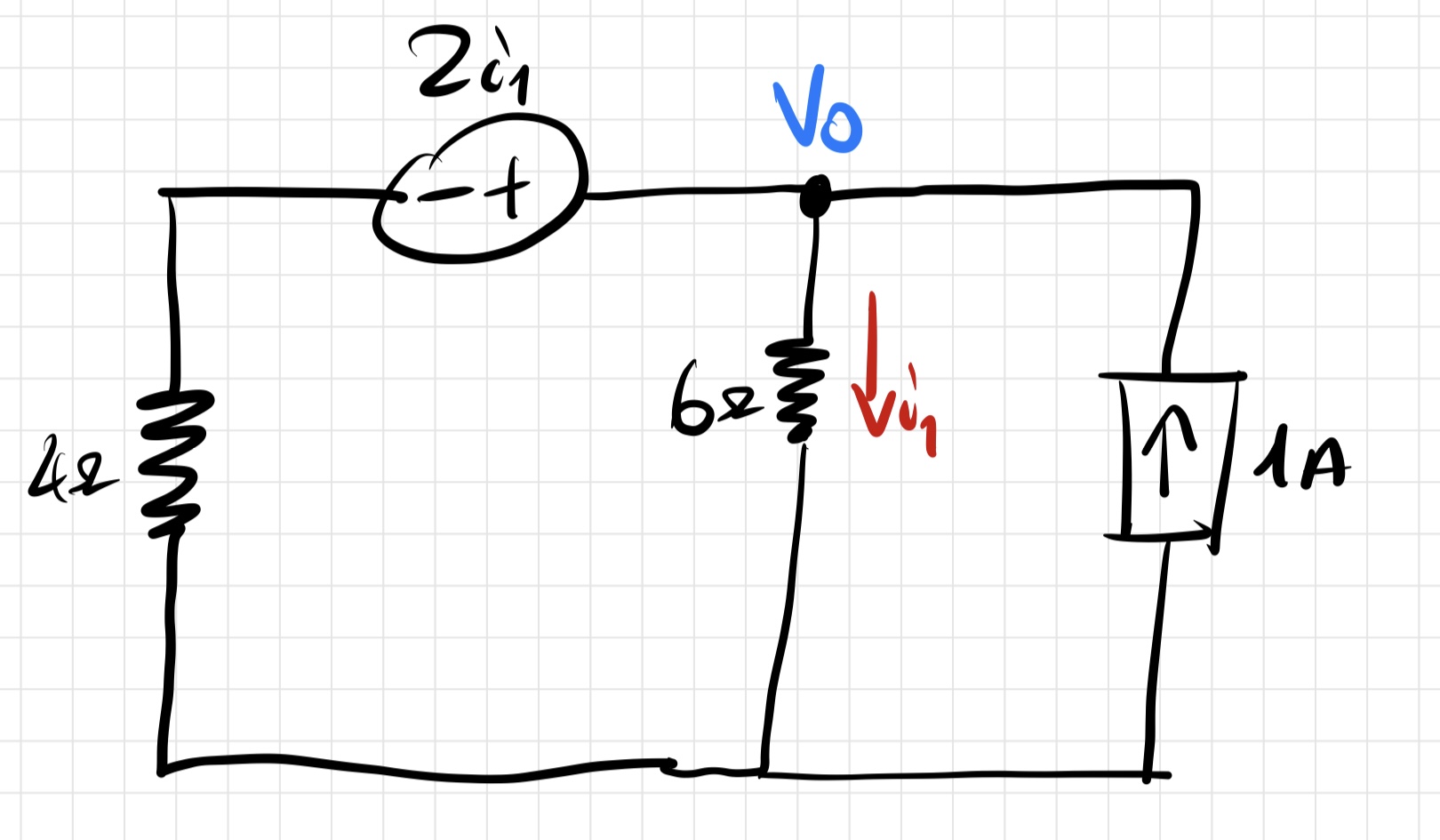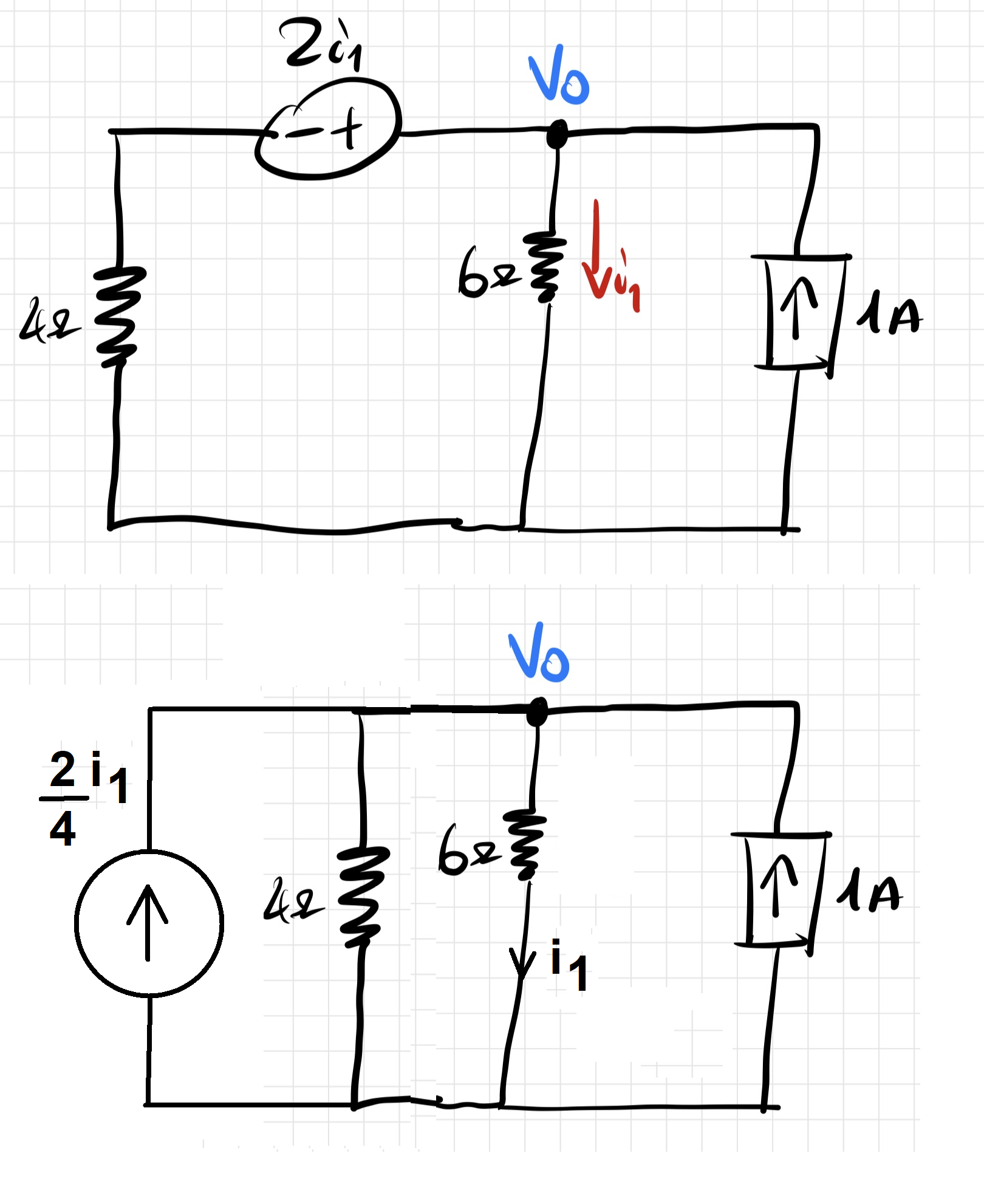I have the following circuit as shown in the picture. My question is how can I perform Node analysis in this circuit in the node \$V_{0}\$?
I want to find \$i_{1}\$ but without KCL or KVL. Just the node analysis in the node \$V_{0}\$.
I tried : \$\frac{V_{0}}{6} +\frac{V_{0}}{4}-1 = 0 \$ ignoring the ccvs. If I take it into account the dependent ccvs how the node analysis will be?
Any help?
(Side note: I know that KCL in node \$V_{0}\$ and KVL in the left sub circuit solves it but I want to see the node analysis how will be changed if I take into account the dependent source. The current source 1A is the circuit excitation in the terminal A,B)




